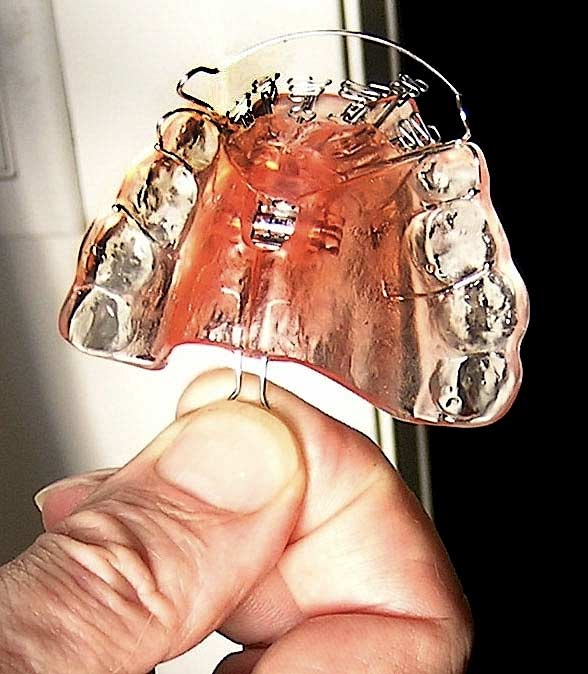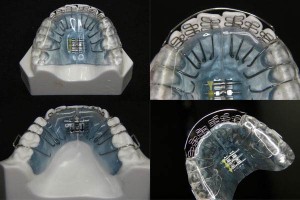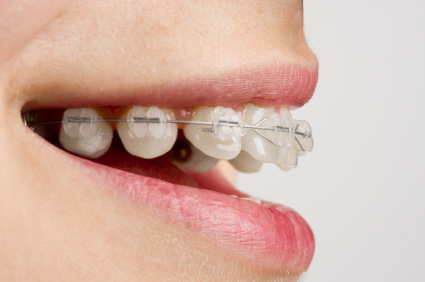TMJ Orthodontics
Epigenetic orthodontics for TMJ patients
 Epigenetic orthodontics is a growing trend in the world of dental care. The process uses a patient’s own DNA to correct crooked teeth and fix other problems that can cause TMJ.
Epigenetic orthodontics is a growing trend in the world of dental care. The process uses a patient’s own DNA to correct crooked teeth and fix other problems that can cause TMJ.
Millions of people in the United States suffer from this condition, but many doctors do not look for the disorder and others don’t know how to treat it. DNA appliances can reduce the symptoms of TMJ, including sleep problems and jaw locking, and aren’t as invasive as other procedures.
Do I have TMJ Disorder?
Symptoms include migraines, neck pain, jaw pain, lower back pain, snoring, sleep apnea. Use our Free TMJ Disorder Assessment ToolsWhy use a TMJ dental appliance?
TMJ is one of several disorders that can significantly impair the autonomic nervous system, which consists of your pharynx, which is a long tube that transports air from your nose and mouth to your stomach and lungs, and other parts. When your tongue and jaw are out of alignment, it keeps food, air and other materials from moving through the proper channels. Difficulty sleeping ranks as one of the most common symptoms of TMJ.
TMJ orthodontics will slowly change your bite and the alignment of your jaw as it pushes your teeth into the proper spaces to fill out any gaps. This type of orthodontic can also assist with headaches, wear and tear on your teeth, grinding and the other symptoms that you experience.
What is a TMJ DNA appliance?
Braces are one of the more common treatment options suggested for TMJ sufferers, but many people find that once the braces come off, their teeth slowly shift back into the original positions within a few years.
A DNA orthodontic treatment for TMJ might be a better solution. Prior to creating a dental appliance, the dentist takes a mold of your teeth, which the doctor then uses that mold to create a piece that fits over your existing teeth. You can tighten or loosen the appliance as needed in just a few seconds, and most patients notice little to no discomfort.
 You need to wear the device for a minimum of eight hours a day and up to 16 hours a day, but you can decide when you want to wear it and when you want to take it out. DNA appliances slowly force your teeth into the proper alignment, and many patients notice an increased lack of TMJ symptoms after a few weeks. After up to a year, you can stop using the device.
You need to wear the device for a minimum of eight hours a day and up to 16 hours a day, but you can decide when you want to wear it and when you want to take it out. DNA appliances slowly force your teeth into the proper alignment, and many patients notice an increased lack of TMJ symptoms after a few weeks. After up to a year, you can stop using the device.
Epigenetic orthodontics, also known as functional orthodontics, can repair damage caused by your genes, including a misaligned bite, poor jaw structure or small palate. The removable piece essentially corrects the development problems that led to your TMJ and repairs your palate from the inside out, using a biological force that slowly forces the joints, bones and teeth into proper alignment without leading to any discomfort or putting too much pressure on your skull.
Find out more about TMJ orthodontics
 While braces for TMJ is a common treatment, adults often feel self-conscious about wearing braces. You need to wear those braces for a long period of time, and even invisible braces may still make others stop and notice you.
While braces for TMJ is a common treatment, adults often feel self-conscious about wearing braces. You need to wear those braces for a long period of time, and even invisible braces may still make others stop and notice you.
DNA dental appliances offer the same benefits as braces, but you can wear the appliance when you want and take it out when you need. Some patients even wear the device for just a few hours throughout the day and at night when they sleep.
If you want to find out more about TMJ and how a dental appliance can help you, or if you just want to find out more about the available treatment options, please download and read a copy of my e-book.


0 Comments